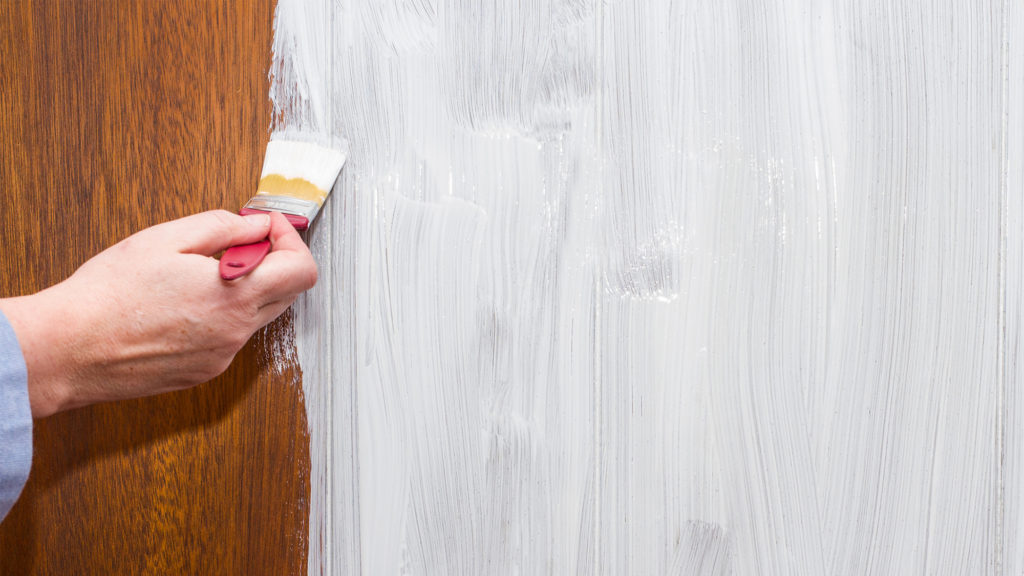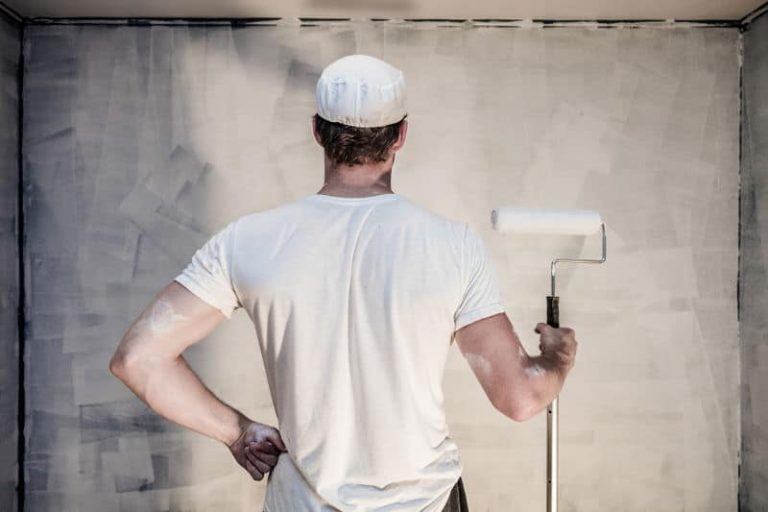Paint is magic. It is the alchemy that can change the look of a surface with a stroke of a brush. If something seems to be an eyesore at home, give it a makeover. And nothing can be easier than stroking it with the color of your choice.
The surface, a piece of furniture, and a wall will get changed into something you will get drawn to and enjoy looking at. It is my great-grandmother’s almirah. I was drawn to it for various reasons, and the prime was solid teak wood and its out-of-this-world quality.
But the only roadblock was its old, tired look. Every time I looked at it, it would accuse me of not looking after it. Then, one day as I sat on my futon staring at it, wondering how to make it cheerful – it hit me between the eyes. Paint!
So, there I was, browsing the local paint shop hunting for shades to remove the almirah’s octogenarian look. I wanted it to look youthful, not a retired relic of the past. It was here that I came to know that Paint is not a stand-alone art. It is done in tandem with Primer.
I was advised very earnestly by the shop owner, and he did seem to know his business, very well that nearly always that one should brush, roll, or spray one or two coats of paint primer before getting down to the business of painting.
“Painters typically want to skip priming before painting, if at all possible,” he said. It has more to do with something as objective as time and patience regarding painting. After all, priming can feel like a wasted effort for people like me who go into the do-it-yourself mode.
Priming requires as much work as laying down the color coat. Every stroke of the brush and every roll of the roller is the same as one would do for the eventual color coat, and yet it must get all covered up.
Importance of Priming Before Painting

Primer’s coat is almost always recommended for almost all painting assignments, whether it is new drywall, old wood, bare metal, previously painted brick, or any other surface. “Primer is essentially sticky, flat paint that is designed to adhere well and to provide a consistent base for topcoats of paint.”
If we paint a surface, be it wood, wall, or metal, the finished product might not be a beautiful sight without priming it first. Your brush strokes could show, giving it a very shabby look. The Paint could peel off in times of high humidity. The Paint would spread very unevenly, being a glob in places and runny in others.
It is the surface’s porosity that decides the use of a paint primer. When the surface is too porous, too much of the Paint will be used up to fill the surface. Multiple coats of Paint will then be required before a nice thick protective coat can be achieved.
Thus, priming is an essential part of the painting. The ‘grip’ holds the Paint and gives it the character that the Paint is supposed to create. A smooth, stable, and stain-free surface is created by the Primer so that the Paint can lock onto the surface and give it the desired look.
Primer works in the opposite condition, too. A very smooth, glossy surface can be a deterrent for the Paint to hold on to. Primer being slightly rough and porous, provides a perfect texture for the Paint to stick to.
Applying primer over new surfaces seals the original material, so it does not soak up the Paint, requiring more Paint. Primer also functions as a camouflage to hide joints, or seams, on new drywall, and it prevents bleed-through from knots and other natural blemishes and coloring in the bare wood.
Types of Primers
There are three basic types of primers: oil-based, latex, and pigmented shellac primer. Each has its character and works best on specific surfaces and in particular circumstances, respectively.
Oil-based primers have been an industry standard for decades. Each Primer has a different drying time and a compatible surface. So, one should adhere to directions given by the manufacturer. One should not be in a tearing hurry to complete the painting project.
Applying Paint on the surface without allowing the Primer to dry completely can mess up all the hard work. Drying time for primers vary with the type and manufacturer; it can extend up to 24 hours to dry so that the paint-dipped brush does not pull it along with its strokes.
The drying depends on factors such as temperature, relative humidity, surface, and weather.
Oil-based Primer
When choosing a primer, one must let the surface be the deciding factor. If it is wood, an oil-based primer is advisable because oil-based Paint should be used. Oil-based Primer will work best under the similar component Paint; otherwise, there is the danger of paint peeling or cracking up.
Oil-based Primer doubles up as a protective shield on wood, repelling termites and prevents them from warping during the highly humid weather. Oil-based Primer is stickier than latex primer, and that tackiness remains for hours until the oil-based Primer dries. It needs between 1-24 hours to dry, depending on the Paint’s formula, the manufacturer, and the usage.
No products found.
The factors that affect the drying time include the temperature, levels of humidity, and the coat’s thickness. The more oil it has, the more time it will take to dry. External oil-based primers take up to 24 hours to dry when temperatures are more than 45 degrees Fahrenheit. For lower temperature ranges of 35-45, it takes the Primer 48 hours to dry.
It takes longer to dry in high humidity areas, whereas drying is quicker in low humidity areas. Even if it is raining outside and you are painting indoors, your Paint will take longer to dry. This is where my doddery old almirah came in.
I was thinking of gratifying my dear old granny-in-grave during the monsoons when I could not have stepped out of the house, and here the Primer was refusing to dry. It could not have been a hurried job even if I had a plane to board. The only solution to reduce the drying time was to find a brand that boasted of less oil and more pigment.
Latex Primer
Latex primer is best compatible with latex paints. It is a water-based primer and takes 1-2 hours to dry. This Primer is best used to freshen up drywall. It has a low VOC (volatile organic compound) formula, making it a healthier option than the oil-based or shellac Primer.
No products found.
Most latex primers dry to touch within thirty minutes to one hour. But it is not advisable to paint the wall until the Primer dries thoroughly, which can take up to three hours. High humidity and cool temperatures prolong drying time.
Shellac Primer
Shellac is the name given to a resin obtained from the secretion of the female “lac bug” (Kerria lacca) on trees, mostly in the forests of India and Thailand. It is made into dry flakes and dissolved in ethanol to obtain liquid shellac, which is then used as a brush-on colorant, food glaze, and wood finish.
Shellac has been used for centuries to seal the wood and other surfaces. Shellac-based Primer is highly recommended for interior walls and is possibly the best stain-blocking Primer.
No products found.
This Primer can completely obliterate severe water and smoke damage to walls and surfaces —it can even seal in smells from smoke damage. It dries to touch in twenty minutes and can be recoated in forty-five minutes.
There are instances when people have set up something akin to an assembly line because of its little drying time. By the time a person brushes the right edge, the left is ready to be recoated.
The primer film develops full adhesion and hardness after it cures in one to three days. However, the other factors affecting its drying time are once again temperatures, which, if lower, would prolong it, higher humidity and the addition of tint will make you wait for it to dry and cure.
So, painting any surface without first sealing it with a primer of your choice is like drinking decaffeinated coffee. According to how much time one is willing to dedicate to the painting project, one must make an informed choice. My choice for the grand-old almirah was shellac-based Primer, and the second was oil-based one. Shellac, being an age-old product, has been in use for centuries.
It is natural and safe since the VOC is almost negligible. Shellac is the easiest of the classic finishes to apply. And I did so want a classic look to it. It produces an excellent, mellow finish and accentuates the natural grain of the wood. Oil-based Primer, too, has its pluses. Now that I was more interested in the look than the amount of time it took to complete the project.
So, folks, your choice will also be dictated by what surface you are painting and the ultimate look you are aiming at. My advice is never to be in a hurry to complete the project; let the Primer dry, friendly, and proper. Only then dip your brush in the Paint can! Happy painting.

